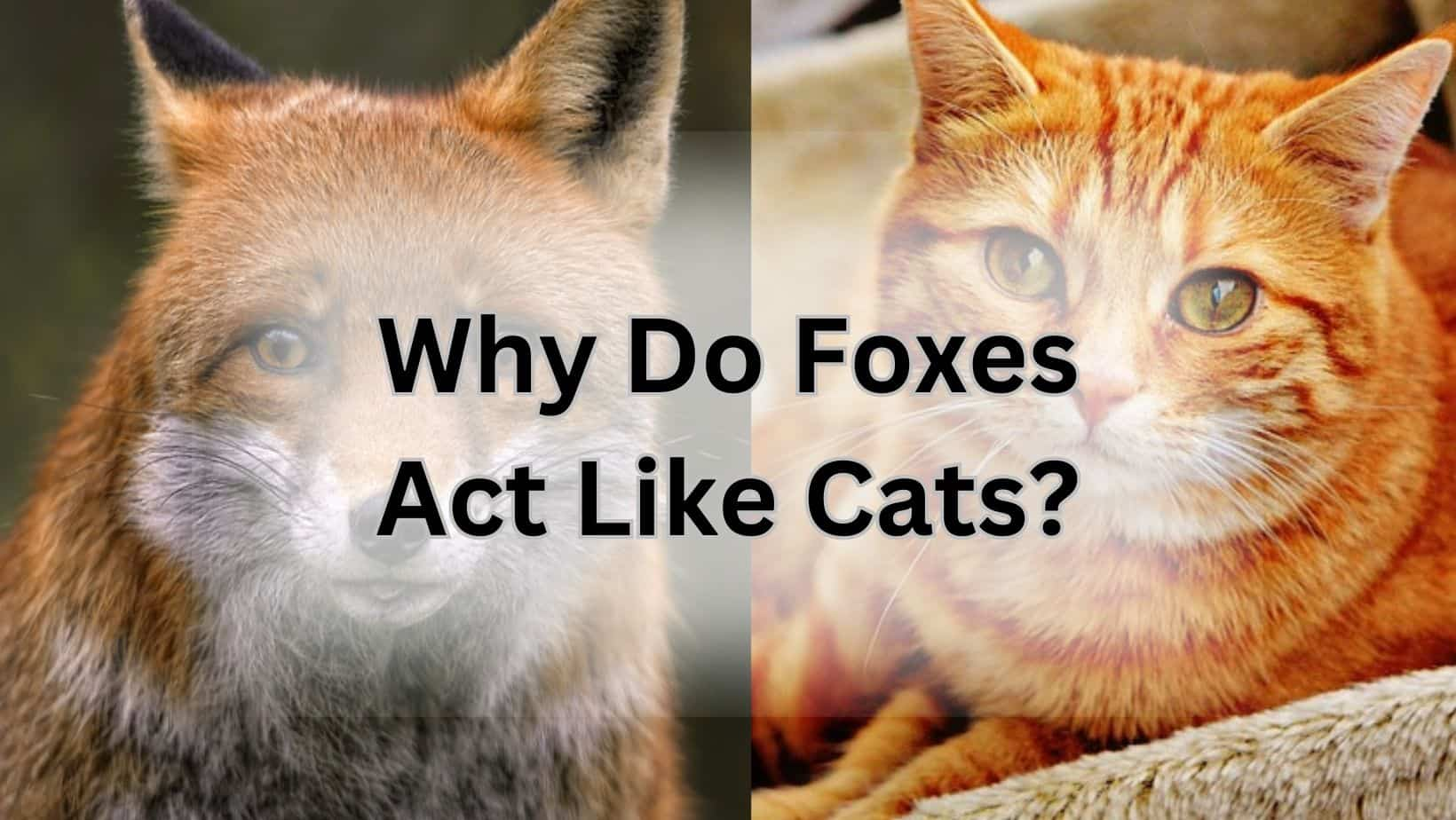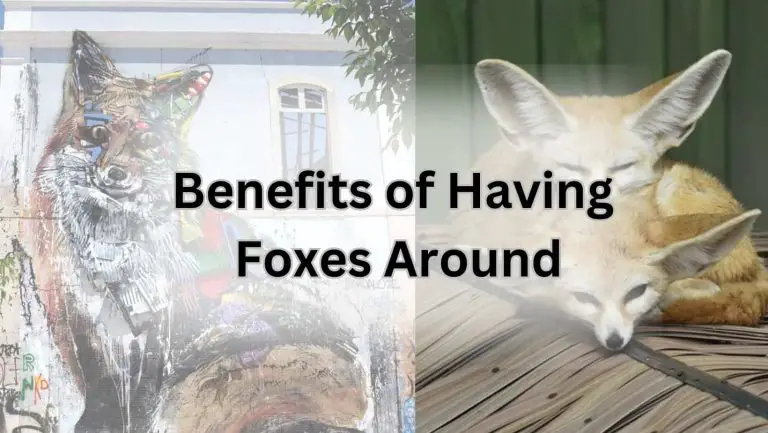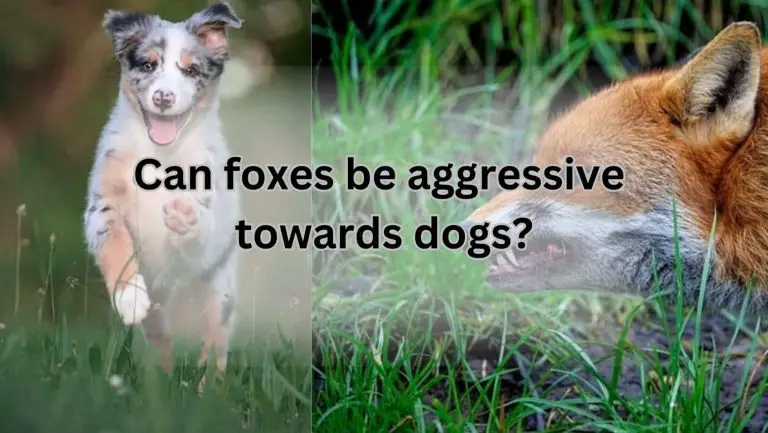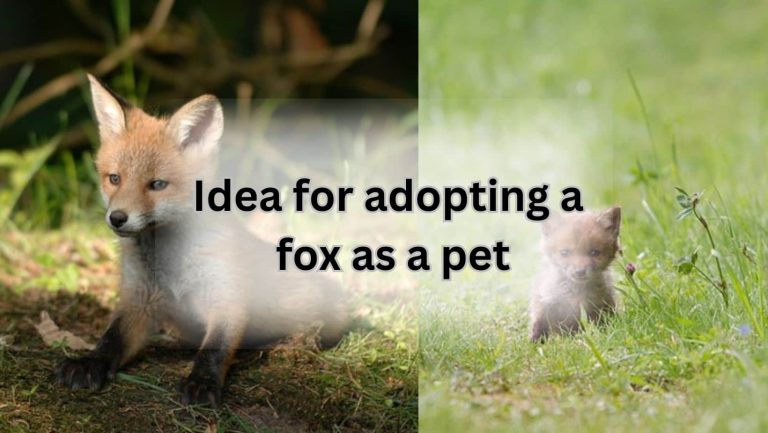Why do foxes act like cats? Unraveling the mystery!

Why Do Foxes Act Like Cats
Ever wondered why those sly foxes sometimes act like our purr-fect feline friends? Well, let me spill the beans on this intriguing behavior! Foxes and cats may seem like an odd couple, but they actually share some common traits that make them behave in similar ways. From their hunting techniques to their playful nature, these cunning creatures have more in common than meets the eye.
Similar Behaviors
When it comes to hunting, both foxes and cats are stealthy predators that rely on their agility and cunning to catch their prey. Their grooming habits are also surprisingly alike, with both animals taking great care to keep themselves clean and tidy. And let’s not forget their playful side – foxes and cats both love to frolic and have a good time, showing off their mischievous personalities.
Reasons to Keep Reading
If you’re a fan of wildlife and animal behavior, you’ll love diving into the fascinating world of foxes and cats. Discover the secrets behind their similar behaviors and learn more about what makes these creatures tick. So, grab a cup of tea, sit back, and get ready to uncover the mysteries of why foxes act like cats!
Evolutionary Adaptations
Ah, the age-old question of why do foxes act like cats. Well, my fellow wildlife enthusiasts, let me take you on a journey through the fascinating world of evolutionary adaptations. You see, the behavior of foxes resembling that of cats is not just a mere coincidence, but rather a result of shared ancestry, environmental factors, and survival strategies.
Shared Ancestry
Let’s start with the fact that foxes and cats actually share a common ancestor. Both belong to the order Carnivora, which includes a wide range of carnivorous mammals. This shared ancestry has led to some similarities in their behaviors, such as their agile and stealthy hunting techniques.
Environmental Factors
Now, let’s talk about the environment in which foxes and cats live. Both animals are known for their adaptability to various habitats, whether it be forests, grasslands, or urban areas. In order to thrive in these diverse environments, they have developed similar behaviors, such as climbing trees, stalking prey, and grooming themselves meticulously.
Survival Strategies
Last but not least, let’s not forget about the survival strategies that foxes and cats have honed over millions of years. From hunting small rodents to avoiding predators, these animals have developed cunning and resourceful tactics to ensure their survival in the wild. And sometimes, these strategies may overlap, leading to behaviors that make foxes appear more like cats than their canine counterparts.
So, there you have it, my friends. The next time you see a fox exhibiting cat-like behaviors, just remember that it’s all thanks to evolutionary adaptations that have been shaped by shared ancestry, environmental factors, and survival strategies. Nature truly is a wondrous and mysterious thing, isn’t it?
Social Interactions
Why do foxes act like cats, you ask? Well, let’s dive into the fascinating world of social interactions among these cunning creatures. Foxes, much like their feline counterparts, have some interesting behavior patterns when it comes to interacting with others of their kind.
Communication Methods
When it comes to communication, foxes and cats share some common ground. Both animals use a variety of vocalizations, body language, and scent marking to convey their messages to one another. Whether it’s a playful chirp or a warning growl, these animals know how to get their point across.
Territorial Behavior
Foxes and cats are both territorial creatures, fiercely defending their turf from intruders. They mark their territory with scent glands and vocalizations, letting others know that this is their domain. This behavior helps them establish boundaries and protect valuable resources.
Group Dynamics
While cats are known for their solitary nature, foxes are more social animals, often living in small family groups. These groups, known as packs, work together to hunt, raise young, and defend their territory. This cooperative behavior is essential for their survival in the wild.
So, the next time you see a fox acting like a cat, remember that these behaviors are rooted in their social interactions and play a crucial role in their daily lives. Nature sure has a way of bringing different species together in unexpected ways!
Physical Characteristics
Have you ever noticed how foxes seem to act like cats at times? Well, it turns out that there are some interesting physical characteristics that these cunning creatures share with our feline friends. Let’s dive into why foxes exhibit cat-like behavior!
Flexible Bodies
One of the reasons why foxes may act like cats is their incredibly flexible bodies. Just like cats, foxes are agile and nimble, able to twist and turn with ease. This flexibility allows them to navigate through various terrains and sneak up on their prey, much like a cat stalking its next meal.
Climbing Abilities
Another cat-like trait that foxes possess is their impressive climbing abilities. While not as renowned for their climbing skills as cats, foxes are still quite adept at scaling trees and fences. This ability comes in handy when they need to escape predators or simply explore their surroundings from a higher vantage point.
Purring Sounds
Lastly, have you ever heard a fox make a purring sound? While not as common as in cats, foxes have been known to emit a purring-like noise when they are content or relaxed. This behavior may be a way for foxes to communicate with each other or express their emotions, much like how cats purr when they are happy.
Why Do Foxes Act Like Cats?
Have you ever noticed how foxes seem to have a little bit of a feline flair to their behavior? Well, let me tell you, there are some interesting reasons behind why these cunning canids act like our beloved kitties.
Hunting Techniques
One of the main reasons why foxes may act like cats is their hunting techniques. Just like our feline friends, foxes are skilled predators who use similar stalking and pouncing movements to catch their prey. It’s all about that stealthy approach and quick strike, just like a cat going after a mouse.
Stalking Prey
When a fox is on the prowl, you can see them moving slowly and quietly, just like a cat stalking its prey. They use their keen senses to track down their next meal, making them look oh-so-feline in their hunting style.
Pouncing Movements
Ever seen a fox leap into the air to catch a bird or small rodent? That pouncing movement is straight out of the cat playbook. It’s all about that quick, precise strike to catch their target off guard.
Nighttime Activity
Just like cats, foxes are most active during the night. This nocturnal behavior is another reason why they may seem like our feline friends. They prefer the cover of darkness to hunt and explore, just like a cat prowling around the neighborhood.
So, the next time you see a fox exhibiting some cat-like behavior, just remember that these clever canids have a few tricks up their sleeves that are straight out of the cat playbook. It’s all part of what makes them such fascinating creatures in the wild!
Grooming Habits
Have you ever noticed how foxes seem to act like cats when it comes to grooming? It’s not just a coincidence, my friend! These cunning creatures have some feline-like grooming habits that will make you do a double-take.
Self-Cleaning
Just like our feline friends, foxes are experts at keeping themselves clean and tidy. They use their tongues to lick their fur and remove any dirt or debris that may have accumulated throughout the day. It’s a sight to behold, watching a fox meticulously groom itself with such precision and care.
Licking Fur
Foxes are known for their attention to detail when it comes to grooming. They will spend hours licking every inch of their fur, making sure it’s spotless and shiny. This behavior is not only important for maintaining their appearance but also for keeping themselves healthy and free of parasites.
Attention to Detail
When it comes to grooming, foxes don’t mess around. They take their time and pay close attention to every little detail. From cleaning between their toes to grooming their tails, these clever creatures know how to keep themselves looking sharp. It’s no wonder they can sometimes be mistaken for our feline companions!
Playful Nature
Ever wondered why foxes act like cats? Well, let’s dive into the playful nature of these cunning creatures and uncover the reasons behind their feline-like behavior. From chasing objects to their insatiable curiosity, foxes share some striking similarities with our beloved feline friends. Let’s take a closer look at why foxes exhibit cat-like behaviors.
Chasing Objects
Just like cats, foxes have a natural instinct to chase objects that catch their eye. Whether it’s a fluttering butterfly or a bouncing ball, these playful predators can’t resist the urge to pounce and play. This behavior not only provides them with mental stimulation but also helps them hone their hunting skills in the wild.
Curiosity
Curiosity may have killed the cat, but it certainly keeps the fox entertained. Foxes are known for their inquisitive nature, constantly exploring their surroundings and investigating new sights and smells. This curiosity mirrors the behavior of cats, who are notorious for their love of exploration and adventure.
Agility in Movement
When it comes to agility, foxes are in a league of their own. These nimble creatures can twist and turn with the grace of a cat, navigating through dense foliage and leaping over obstacles with ease. Their fluid movements and acrobatic skills are reminiscent of our feline companions, who are known for their impressive dexterity and flexibility.
Environmental Factors
Have you ever wondered why foxes sometimes act like cats? Well, let me tell you, it’s not just a coincidence! These cunning creatures have some feline-like behaviors that can be attributed to various environmental factors. Let’s dive into the world of foxes and their cat-like antics.
Camouflage Needs
One reason why foxes may exhibit cat-like behaviors is their need for camouflage. Just like cats, foxes are skilled hunters and need to blend in with their surroundings to sneak up on their prey. By acting like cats, they can move stealthily through the underbrush, making it easier to catch their next meal.
Stealthy Approaches
Another reason why foxes may act like cats is their preference for stealthy approaches. Cats are known for their silent movements and ability to surprise their prey, and foxes have adopted similar tactics. By mimicking cat behaviors, foxes can sneak up on unsuspecting rodents or birds without making a sound.
Adaptation to Urban Areas
In today’s world, many foxes have adapted to urban environments where they coexist with humans. In these settings, foxes may need to be more cautious and discreet to avoid detection. By behaving like cats, they can navigate the urban landscape more effectively and avoid potential dangers.
Communication Methods
Have you ever wondered why foxes seem to act like cats at times? Well, one of the reasons behind this behavior lies in their communication methods. Just like our feline friends, foxes use various ways to convey messages to each other and to their surroundings.
Vocalizations
Foxes, much like cats, are known for their wide range of vocalizations. From high-pitched screams to soft whines, these cunning creatures use their voices to communicate with each other. Whether it’s to signal danger, establish territory, or attract a mate, foxes are not shy when it comes to expressing themselves vocally.
Body Language
Another similarity between foxes and cats is their use of body language to communicate. Just like a cat’s swishing tail or flattened ears, a fox’s body movements can speak volumes. From playful leaps to defensive postures, these animals rely on their physical gestures to convey their intentions and emotions.
Scent Marking
Lastly, scent marking is a common communication method used by both foxes and cats. By leaving their scent on various objects in their environment, these animals are able to establish their presence and communicate with other individuals. Whether it’s through urine marking or rubbing their scent glands on objects, foxes and cats use scent to leave messages for others to decipher.
Survival Strategies
Resourcefulness
Have you ever noticed how foxes seem to have a knack for getting out of tricky situations just like cats? Well, that’s because both animals share a common trait – resourcefulness. Foxes are known for their ability to adapt to different environments and make the most out of whatever resources are available to them. This cleverness allows them to survive in a variety of habitats, just like our feline friends.
Adaptability
Just like cats, foxes are incredibly adaptable creatures. They can thrive in urban areas, forests, and even deserts, thanks to their ability to adjust their behaviors and hunting strategies based on their surroundings. This adaptability helps them navigate different environments with ease, much like a cat gracefully moving through its territory.
Intelligence in Problem-Solving
When it comes to problem-solving, foxes are no slouches. They exhibit a high level of intelligence when it comes to finding food, avoiding predators, and even outsmarting humans. This cognitive ability is similar to the cleverness displayed by cats when they figure out how to open doors or manipulate their owners. It’s this intelligence in problem-solving that makes foxes act like cats in many ways.
In conclusion, the similarities between foxes and cats go beyond just their physical appearance. Their shared survival strategies, resourcefulness, adaptability, and intelligence in problem-solving all contribute to why foxes may act like cats. So the next time you see a fox exhibiting feline behaviors, remember that it’s all part of their natural instincts and abilities that help them thrive in the wild.






